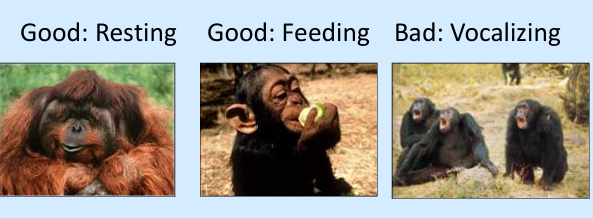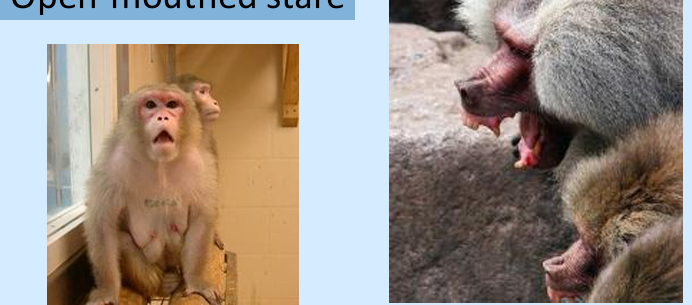ANT101 Lecture 8 Primate Behaviour and Sampling Methods
1/12
Earn XP
Description and Tags
UTM
Name | Mastery | Learn | Test | Matching | Spaced |
|---|
No study sessions yet.
13 Terms
What is DOMINANCE?
Agonistic behavior is expressed via Aggressive and Submissive signals
Affliative
Ethogram
Ethology = the study of animal behavior
: a detailed, comprehensive list of the known behaviors and activities of a species
Agonism?
Aggression: bites, chase
Soft Interactions: Facial threats, approach or withdrawal.
Focal Animal Sampling?
Gathering behavioral data on
One particular animal
At a specific point in time
For a period on time
What it does
What is done to it
EG: Rest, travel, feed, social, other.
It needs to be detailed
Instantaneous Scan Sampling
Also called “scan sampling”, “interval sampling” or “point sampling” • The observer takes an instantaneous look at the entire group, and records certain types of data at particular points in time
Like taking a brain snap shot of what everyone is doing at that specific time
Bad for recording event behaviours
Bad for recording rates
The group is known not individuals and it can impact data
Good for recording state behaviours.
Good for recording behavioural synchrony
Less observer fatigue

Summarize the topic

Signals of dominant/subordinate status?
Bared-teeth display •Mounting •Open-mouthed stare
Vocalizations
Greetings
How is dominance measured?
Outcome of agonistic interactions –decided (clear “winner” or “loser”) –undecided (cannot tell who is dominant)
How is dominance communicated?
Presentations (deference a submissive behavior)
Displacement (sub plant)
Benefits of dominance ?
High rank = Higher mating chances
Priority access to resources
How do individuals attain dominance?
Challenge other dominant animals
Leave one group and enter another for higher rank
Can inherit rank
Disadvantages of Focal Animal Sampling
Not possible to record every possible behavior
Exact time of activity and the duration of the activity is hard to track
it records only one animal